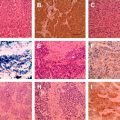Over the last 30 years neoadjuvant treatment of stage IIIA non–small cell lung cancer (NSCLC) followed by surgical resection for stage IIIB disease has significantly improved the overall results of treatment for patients with stage III NSCLC as well as for those with locally invasive tumors. Different chemotherapy regimens have been used, although in most studies some combination of drugs that include cisplatin is the standard. Radiation when given as part of the induction protocol appears to offer a higher rate of resection and complete resection, and higher doses of radiation are associated with better nodal downstaging. Resection in patients with persistent N2 disease and pneumonectomy following induction therapy remain controversial. Resection in patients with persistent N2 disease and pneumonectomy following induction therapy remain controversial.
Evolution of neoadjuvant therapy
The treatment of stage IIIA non–small cell lung cancer and subsequently resectable stage IIIB disease has evolved over the last 30 years. Before the advent of the cisplatin era that began in the early 1980s, the overall survival of patients with stage IIIA-N2 disease was dismal, and a major focus of management was surgical staging. In their classic article in 1982 Pearson and colleagues reported a 9% 5-year survival in 62 patients with a positive mediastinoscopy who underwent a complete surgical resection, compared with a 24% 5-year survival in 79 patients who had a negative mediastinoscopy and who after a complete resection were found to have unsuspected mediastinal nodal disease. Postoperative adjuvant chemotherapy and radiotherapy had little impact on the survival of these patients.
Early phase 2 trials of neoadjuvant chemotherapy using mitomycin, vinblastine, and cisplatin performed at the Memorial Sloan-Kettering Cancer Center and the University of Toronto demonstrated improved survivals of 20% in patients with preoperatively identified N2 disease. Similar results were seen in early phase 2 studies performed combining radiation (3000–4500 cGy) with platinum-containing chemotherapy. In 1994 small phase 3 trials demonstrated improved survival with induction chemotherapy followed by surgery compared with surgery alone. In the trial by Roth and colleagues at M.D. Anderson, patients underwent induction therapy with a combination of cyclophosphamide, etoposide, and cisplatin, followed by surgery and then 3 additional cycles postoperatively. Thirty-five percent of the patients had a major clinical response, and their 2-year and 3-year survivals were 60% and 50% compared with the surgery-alone group (25% and 15%). In the trial from Barcelona patients were treated with induction mitomycin, ifosfamide, and cisplatin followed by surgery and postoperative radiation in comparison with surgery and radiation. The 2-year and 5-year survivals were 29% and 17% in the chemotherapy/surgery/radiation arm, and 5% and 0% in the surgery/radiation arm.
In 1989 the Cancer and Leukemia Group B (CALGB) designed a multi-institutional phase 2 trial of high-intensity trimodality therapy for patients with surgically staged IIIA-N2 non–small cell lung cancer, and published these results in 1995 (CALGB 8935A). The trial combined 2 cycles of neoadjuvant cisplatin and vinblastine with surgical resection and radical lymphadenectomy, followed by 2 additional cycles of adjuvant chemotherapy followed by radiation therapy (5400–6000 cGy). This study was performed by 30 separate teams. Their definition for a complete resection was defined as all margins negative as well as the highest lymph node resected. Seventy-four patients were entered into the study. Eighty-six percent of all patients were explored and 62% of all eligible patients underwent resection. The operative mortality was 3.2% and the morbidity 30%. However, only 31% of the patients had an R0 resection by their criteria. Nonetheless, the study was important because it demonstrated that an aggressive approach that included induction therapy could be delivered with a then relatively low treatment-related mortality of 5.4%, which compared favorably with an earlier study by CALGB that included an induction regimen of cisplatin, vinblastine, and fluorouracil and concomitant radiation to 3000 cGy whereby the treatment-related mortality was 15%. The study also demonstrated the importance of an R0 resection. These patients had a 3-year survival of 46% compared with 21% for those having an incomplete resection and 0% for unresectable patients.
In 1995 the mature results of Southwest Oncology Group (SWOG) 8805 were published. This phase 2 trial evaluated the impact of induction chemotherapy and concomitant radiotherapy on survival in 126 patients with stage IIIA/B non–small cell lung cancer. All patients had biopsy-proven N2 or N3 disease or T4 lesions. The induction regimen consisted of 2 cycles of cisplatin and etoposide with concurrent radiation to 4500 cGy. Seventy-five patients had stage IIIA-N2 and 51 patients had stage IIIB disease. Twenty-seven of the patients with stage IIIB disease were N3. Operation consisted of resection and lymph node sampling. Unresectable patients or patients with positive nodes received additional chemotherapy and radiation postoperatively. In this study 85% of patients with stage IIIA-N2 and 80% of patients with stage IIIB were resected. There were 10% treatment-related deaths. With this aggressive induction approach, 21% of patients had a complete pathologic response and 37% had only residual microscopic disease. There was no difference in the survival of patients with stage IIIA and stage IIIB disease. The 2-year survivals were 37% and 39% and the 3-year survivals 27% and 24%, respectively. However, this study demonstrated the importance of downstaging on survival, and the strongest predictor of survival was an absence of tumor in the mediastinal lymph nodes. The median and 5-year survivals for these patients were 30 months and 44% versus 10 months and 18% for patients with residual nodal disease.
In 2001 Rusch and colleagues published the initial results of SWOG 9416, which adopted the protocol of 8805 and applied it to superior sulcus tumors. Eighty T3 and 31 T4 patients were enrolled. The resection rate was 91% for T3 tumors and 87% for T4 tumors. Once again the impact of the induction regimen on downstaging was impressive, with 28 patients having a complete pathologic response and only 26 patients having microscopic residual disease. The long-term results of this study, published in 2007, demonstrated a 54% survival for patients undergoing a complete resection.
In 2005 Albain and colleagues reported the initial results of a randomized trial of definitive chemoradiotherapy (194 patients) versus induction chemoradiotherapy followed by surgical resection (202 patients) for patients with stage III-N2 non–small cell lung cancer (RTOG 9309, Intergroup Trial 0139). All patients received 2 cycles of chemotherapy with cisplatin and etoposide. Both groups received concomitant radiation. However, the radiation doses were significantly different between the two groups. The patients randomized to go onto surgical resection received a total dose of 4500 cGy and the patients randomized to definitive radiation received a total dose of 6100 cGy. The mature results of this trial were reported in 2009. Although all patients were to receive 2 additional cycles of chemotherapy, this was only accomplished in 55% of the surgical group and 74% of the nonsurgical group. While there was a difference in the progression-free survival between the two groups (12.8 months in the surgical group vs 10.5 months in the nonsurgical group; P = .017), there was no difference in the overall survival (23.6 months vs 22.2 months; P = .24). However, the operative mortality for patients undergoing pneumonectomy was 26%. In the lobectomy group there was a difference in survival (33.6. months vs 21.7 months in a matched chemotherapy-radiation group; P = .002). However, despite these results many centers have considered patients with N2 disease inoperable. Surgery, however, was not the only variable in this study, as there is a significant difference in the biological effectiveness between 4500 and 6000 cGy of radiation.
The authors of this article have reported their single-institution experiences using neoadjuvant concurrent chemoradiotherapy using platinum-based chemotherapy protocols and high-dose radiation (ca 6000 cGy) followed by surgical resection for patients with stage III A/B non–small cell lung cancer and for locally advanced T3N0 or T4N0 tumors or tumors of the superior sulcus ( Table 1 ). The major difference between other studies and these ones has been the radiation dose, which approximates the dose of radiation in the Intergroup 0139 Trial. The authors’ collective experience highlights the importance of surgical resection for local control even after relatively high doses of radiation. As Table 1 shows, approximately 50% of patients will have residual tumor at the time of resection. In addition, in patients with stage IIIA/B lung cancers and involved lymph nodes these regimens have relatively high success in effecting nodal downstaging. There is no question that operating after higher doses of radiation can be technically challenging, and that pneumonectomy carries significant risk that has to be weighed against potential benefit. Each of the authors has used different slightly different strategies in the management of these patients, but these operations can be performed safely and these regimens are now being used by more surgeons.
| Authors | Year | No. of Patients | Clinical Stage | Study Focus | % CPR | % Nodal Downstaging | No. of Pneumonectomies | % Pneumonectomy Mortality |
|---|---|---|---|---|---|---|---|---|
| Sonett et al | 1999 | 19 | IB, IIB, IIIA/B | — | 42 | 83 | 6 | 0.0 |
| Vora et al | 2000 | 33 | IIIA/B | — | 27 | 64 | 9 | 0.0 |
| Sonett et al | 2004 | 40 | IIB, IIIA/B, IV | — | 45 | 85 | 11 | 0.0 |
| Cerfolio et al | 2005 | 54 | IIIA-N2 | — | 28 | 83 | 9 | 16.7 |
| Kwong et al | 2005 | 36 | IIB, IIIA/B, IV | All Pancoast tumors | 41 | — | 3 | — |
| Daly et al | 2006 | 30 | IIA/B, IIIA/B | All pneumonectomy | 29 | 47 | 30 | 13.3 |
| Edelman et al , a | 2008 | 40 | IIIA/B | hfXRT to 6960 cGy | 17 | 73 | 4 | 0.0 |
| Krasna et al | 2010 | 29 | IIB, IIIA/B | All pneumonectomy | 55 | 91 | 29 | 0.0 |
| Daly et al | 2011 | 47 | IIB, IIIB | All N0 | 45 | — | 12 | 8.3 |
Stay updated, free articles. Join our Telegram channel

Full access? Get Clinical Tree







